AWM41 996 - [Nurses Narratives] Sister Catherine E Lethbridge - Part 1
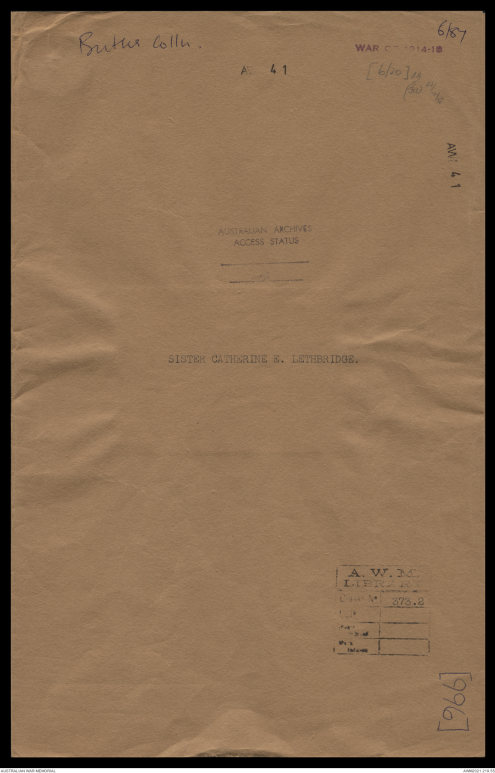
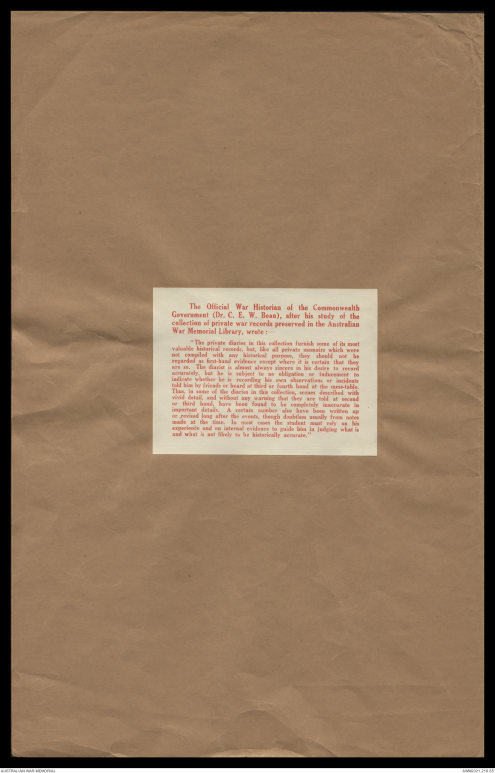
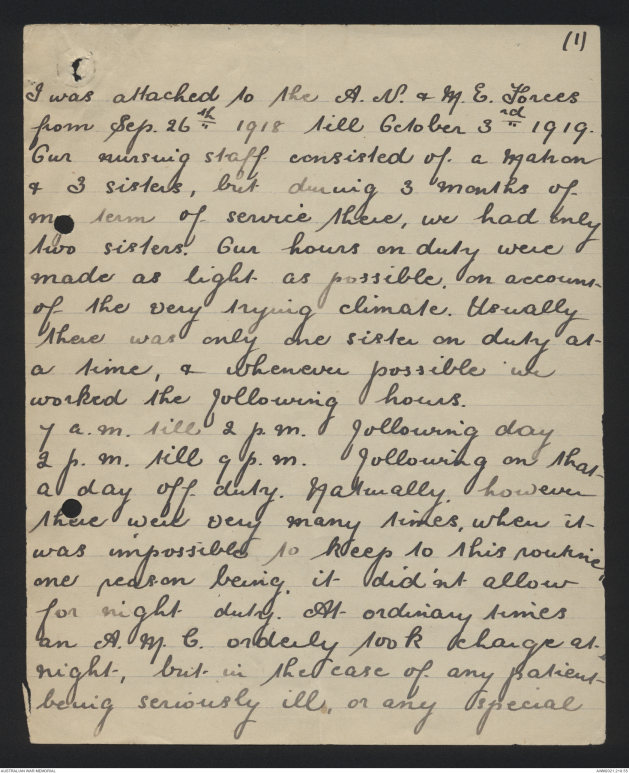
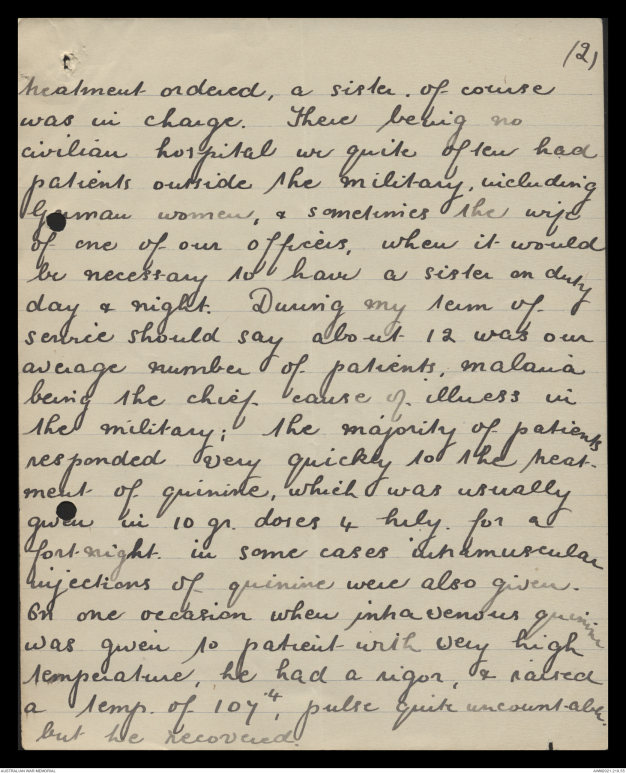
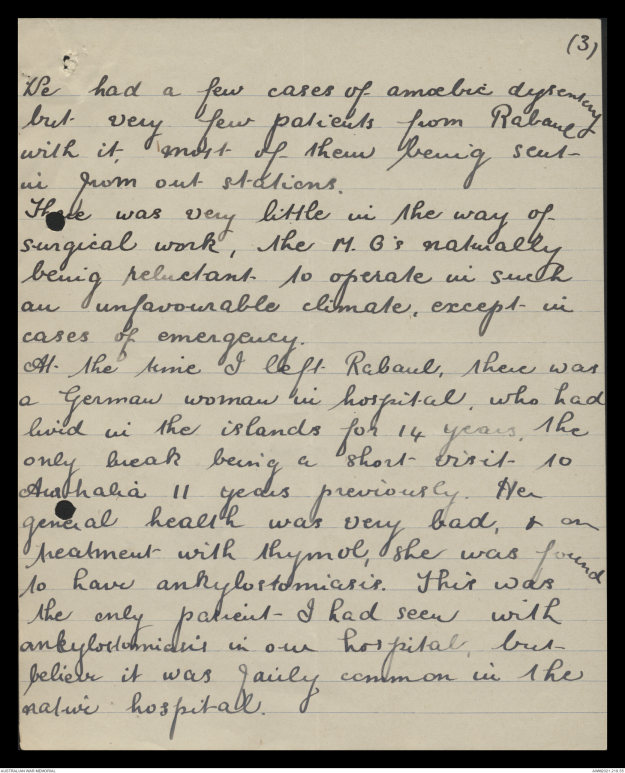

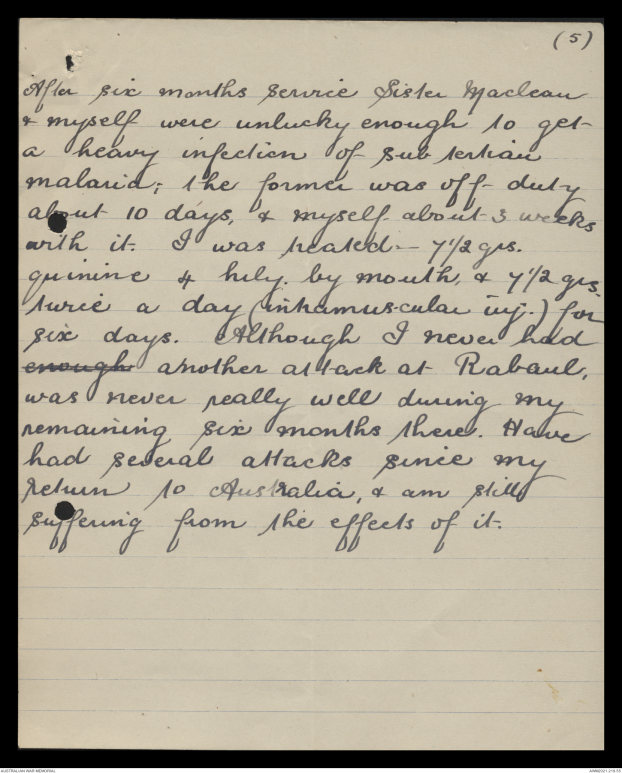
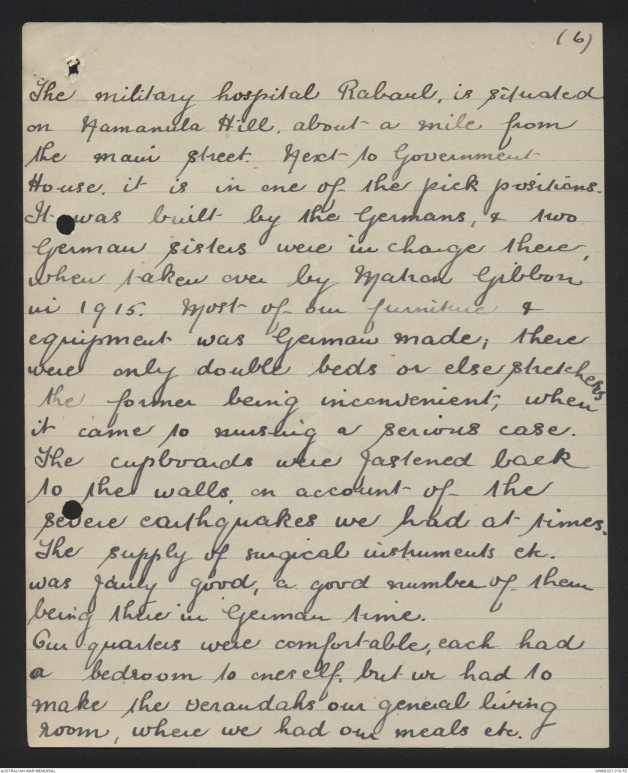
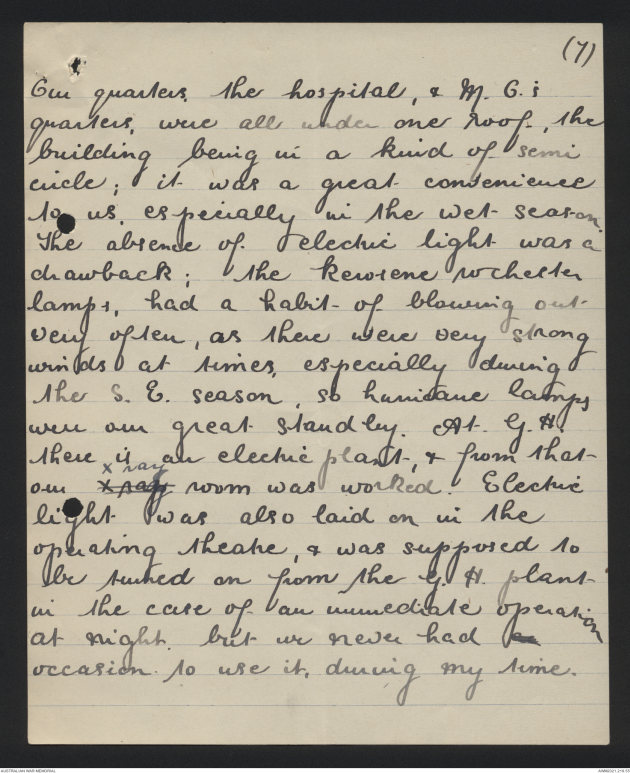
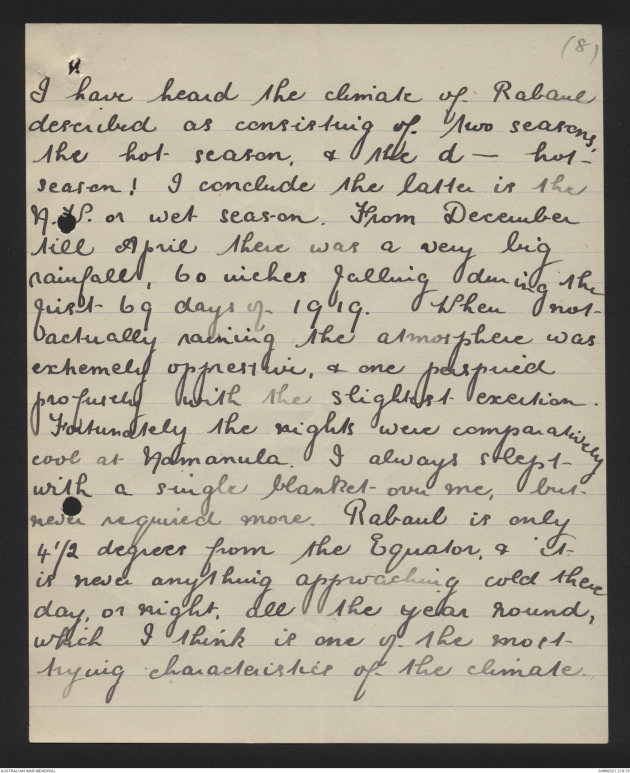
Butler Colln. 6/87
WAR [[?]] 1914-18
AMW41 [6/20] [[?]]
AWM 41
AUSTRALIAN ARCHIVES
ACCESS STATUS
SISTER CATHERINE E. LETHBRIDGE
A.W.M.
LIBRARY
Classn No. 373.2
[[?]]
[[?]]
[[?]]
[996]
The Official War histories of the Commonwealth
Government (Dr C. E. W. Bean), after his study of
the collection of private war records preserved in the Australian
War Memorial Library, wrote:
"The private diaries in this collection furnish some of its most
valuable historical records, but, like all private memoirs which were
not compiled with any historical purpose, they should not be
regarded as first-hand evidence except where it is certain that they
are so. The diarist is almost always sincere in his desire to record
accurately, but he is subject to no obligation or inducement to
indicate whether he is recording his own observations or incidents
told him by friends or heard at third or fourth hand at the mess-table.
Thus, in some of the diaries in this collection, scenes described with
vivid detail, and without any warning that they are told at second
or third hand, have been found to be completely inaccurate in
important details. A certain number also have been written up
or revised long after the events, though doubtless usually from notes
made at the time. In most cases the student must rely on his
experience and on internal evidence to guide him in judging what is
and what is not likely to be historically accurate".
(1)
I was attached to the A.N. & M.E. Forces
from Sep. 26th 1918 till October 3rd 1919.
Our nursing staff consisted of a Matron
& 3 sisters, but during 3 months of
my term of service there, we had only
two sisters. Our hours on duty were
made as light as possible, on account
of the very trying climate. Usually
there was only one sister on duty at
a time, & whenever possible we
worked the following hours.
7 a.m. till 2 p.m following day
2 p.m. till 9 p.m following on that
a day off duty. Naturally, however
there were very many times, when it
was impossible to keep to this routine,
one reason being it didn't allow
for night duty. At ordinary times
an A.M.C. orderly took charge at
night, but in the case of any patient
being seriously ill, or any special
(2)
treatment ordered, a sister, of course
was in charge. There being no
civilian hospital we quite often had
patients outside the military, including
German women, & sometimes the wife
of one of our officers, when it would
be necessary to have a sister on duty
day & night. During my term of
service should say about 12 was our
average number of patients, malaria
being the chief cause of illness in
the military; the majority of patients
responded very quickly to the treatment
of quinine, which was usually
given in 10gr doses 4 hrly for a
fortnight in some cases intramuscular
injections of quinine were also given.
On one occasion when intravenous quinine
was given to patient with very high
temperature, he had a rigor, & raised
a temp. of 107.4, pulse quite uncountable
but he recovered.
(3)
We had a few cases of amoebic dysentery
but very few patients from Rabaul
with it, most of them being sent
in from out stations.
There was very little in the way of
surgical work, the M.O's naturally
being reluctant to operate in such
an unfavourable climate, except in
cases of emergency.
At the time I left Rabaul, there was
a German woman in hospital, who had
lived in the islands for 14 years, the
only break being a short visit to
Australia 11 years previously. Her
general health was very bad, & on
treatment with thymol, she was found
to have ankylostomiasis. This was
the only patient I had seen with
ankylostomiasis in our hospital, but
believe it was fairly common in the
native hospital.
(4)
Most of the sisters were fortunate in
regard to their health, but we had
to take all necessary precautions,
always slept under mosquitoe nets, &
never went anywhere after sun down,
were there was liklihood of encountering
anopheles. (Namanula hill where the
hospital is situated is supposed to be
free of them). We were advised not to
take cold baths, & to avoid being out
in rain, or anything likely to cause a
chill. The men in the military had
to attend quinine parade, & were given
10 grs . quinine 4 times a week. I
never heard of any fixed rule for the
sisters to take quinine as a prophylactic
& took only a few doses myself for
that purpose, as found it had such a
bad effect on me, that very soon
dropped it.
Our drinking water was also always boiled &
filtered.
(5)
After six months service Sister Maclean
& myself were unlucky enough to get
a heavy infection of sub tertian
malaria; the former was off duty
about 10 days, & myself about 3 weeks
with it. I was treated - 7 1/2 grs.
quinine 4 hrly by mouth & 7 1/2 grs
twice a day (intramuscular inj.) for
six days. Although I never had enough another attack at Rabaul,
was never really well during my
remaining six months there. Have
had several attacks since my
return to Australia, & am still
suffering from the effects of it.
(6)
The military hospital at Rabaul, is situated
at Namanula Hill, about a mile from
the main street. Next to Government
House, it is in one of the pick positions.
It was built by the Germans, & two
German sisters were in charge there,
when taken over by Matron Gibbon
in 1915. Most of our furniture &
equipment was German made, there
were only double beds or else stretchers
the former being inconvenient; when
it came to nursing a serious case.
The cupboards were fastened back
to the walls, on account of the
severe earthquakes we had at times.
The supply of surgical instruments etc.
was fairly good, a good number of them
being there in German time.
Our quarters were comfortable, each had
a bedroom to oneself, but we had to
make the verandahs our general living
room, where we had our meals etc.
(7)
Our quarters, the hospital & M.O.'s
quarters, were all under one roof, the
building being in a kind of semi
circle; it was a great convenience
to us, especially in the wet season.
The absence of electric light was a
drawback; the kerosene rochester
lamps, had a habit of blowing out
very often, as there were very strong
winds at times, especially during
the S.E. season, so hurricane lamps
were our great standby. At G. H.
there is an electric plant, & from that
our xray x ray room was worked. Electric
light was also laid on in the
operating theatre, & was supposed to
be turned on from the G. H. plant
in the case of an immediate operation
at night but we never had an
occasion to use it, during my time.
(8)
I have heard the climate of Rabaul
described as consisting of two seasons,
the hot season, & the d-- hot-
season! I conclude the latter is the
A.[[?]].P. or wet season. From December
till April there was a very big
rainfall, 60 inches falling during the
first 69 days of 1919. When not
actually raining the atmosphere was
extremely oppressive, & one perspired
profusely with the slightest exertion.
Fortunately the nights were comparatively
cool at Namanula. I always slept
with a single blanket over me, but
never required more. Rabaul is only
4 1/2 degrees from the Equator, & it
is never anything approaching cold there
day or night, all the year round,
which I think is one of the most
trying characteristics of the climate.
 Sam scott
Sam scottThis transcription item is now locked to you for editing. To release the lock either Save your changes or Cancel.
This lock will be automatically released after 60 minutes of inactivity.